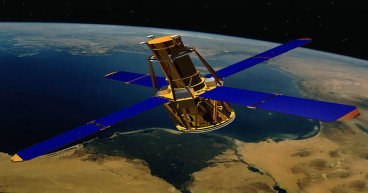MSFT 408.77 -5.4933% AAPL 227.085 -1.3103% NVDA 132.5201 -4.891% GOOGL 171.3 -1.8113% GOOG 172.8692 -1.8569% AMZN 185.36 -3.824% META 564.34 -4.6401% AVGO 168.15 -4.8064% TSLA 249.66 -3.0635% TSM 189.54 -2.5401% LLY 839.61 -0.8526% V 289.94 -0.0758% JPM 222.65 -0.7843% UNH 567.9925 0.8939% NVO 111.63 -1.4218% WMT 82.03 0.7863% LVMUY 132.48 -1.1269% XOM 117.11 0.3599% LVMHF 664.31 -1.3484% MA 501.1476 -2.4416%
General news
Old Nasa satellite falling to Earth but risk of danger ‘low’

Image Source: PAMEDIA
An old Nasa satellite is expected to fall to Earth this week, but experts tracking the spacecraft say chances are low that it will pose any danger.
The defunct science satellite known as Rhessi will plummet through the atmosphere on Wednesday night, according to Nasa and the US Defence Department.
Nasa said on Tuesday that the re-entry location is not being disclosed, given lingering uncertainty over when and where it might go down.

Most of the 660-pound (300-kg) satellite should burn up upon return, but some parts are expected to survive.
The space agency said in a statement the risk of anyone on Earth being harmed by plunging satellite pieces is “low” — about one in 2,467.
Rhessi — short for the Reuven Ramaty High Energy Solar Spectroscopic Imager — rocketed into orbit in 2002 to study the sun.
Before being shut down in 2018 because of communication problems, the satellite observed solar flares as well as coronal mass ejections from the sun.
It captured images in high-energy X-rays and gamma rays, recording more than 100,000 solar events.